Discover 11 hidden attractions, cool sights, and unusual things to do in Deal (United Kingdom). Don't miss out on these must-see attractions: Deal Castle, Walmer Castle, and Hamilton Road Cemetery. Also, be sure to include Deal Timeball in your itinerary.
Below, you can find the list of the most amazing places you should visit in Deal (England).
Table of Contents
Deal Castle
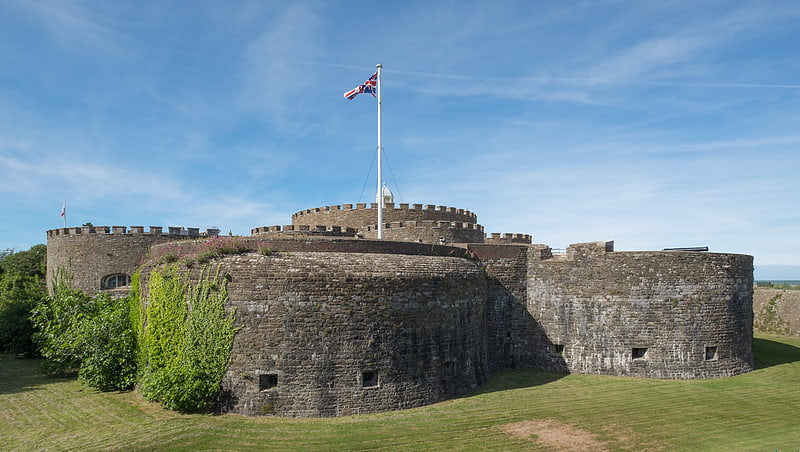
16th-century coastal artillery fortress. Deal Castle is an artillery fort constructed by Henry VIII in Deal, Kent, between 1539 and 1540. It formed part of the King's Device programme to protect against invasion from France and the Holy Roman Empire, and defended the strategically important Downs anchorage off the English coast. Comprising a keep with six inner and outer bastions, the moated stone castle covered 0.85 acres and had sixty-six firing positions for artillery. It cost the Crown a total of £27,092 to build the three castles of Deal, Sandown and Walmer, which lay adjacent to one another along the coast and were connected by earthwork defences. The original invasion threat passed but, during the Second English Civil War of 1648–49, Deal was seized by pro-Royalist insurgents and was only retaken by Parliamentary forces after several months' fighting.
Although it remained armed, Deal was adapted by Sir John Norris and Lord Carrington during the 18th and 19th centuries to form a more suitable private house for the castle's captain, which was by now an honorary position. In 1904, the War Office concluded that the castle no longer had any value either as a defensive site or as a barracks and it was opened to the public when the captain was not in residence. Early in the Second World War, the captain's quarters were destroyed by German bombing, forcing Deal's then-captain, William Birdwood, to move to Hampton Court Palace and the castle became an observation post for an artillery battery placed along the shore line. The castle was not brought back into use as a residence and was restored by the government during the 1950s to form a tourist attraction. In the 21st century, Deal Castle is operated by English Heritage, receiving 25,256 visitors in 2008.[1]
Address: Marine Rd, CT14 7BA Deal
Walmer Castle
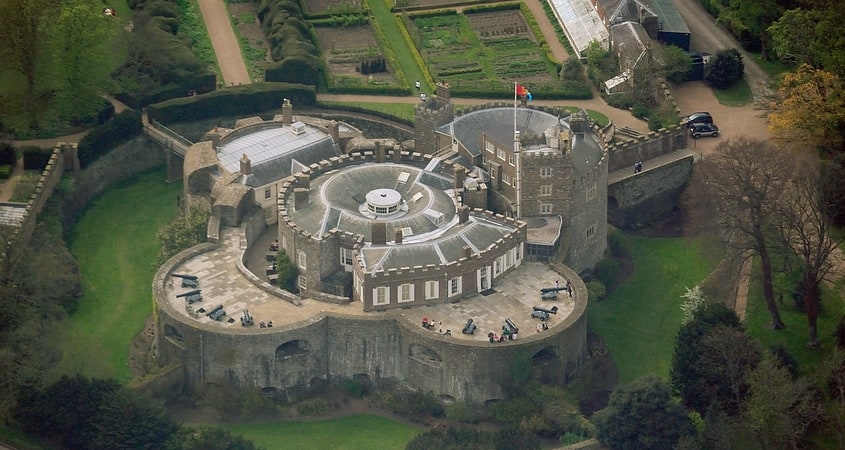
Castle in Walmer, England. Walmer Castle is an artillery fort originally constructed by Henry VIII in Walmer, Kent, between 1539 and 1540. It formed part of the King's Device programme to protect against invasion from France and the Holy Roman Empire, and defended the strategically important Downs anchorage off the English coast. Comprising a keep and four circular bastions, the moated stone castle covered 0.61 acres and had 39 firing positions on the upper levels for artillery. It cost the Crown a total of £27,092 to build the three castles of Walmer, Sandown, and Deal, which lay adjacent to one another along the coast and were connected by earthwork defences. The original invasion threat passed, but during the Second English Civil War of 1648–49, Walmer was seized by pro-Royalist insurgents and was only retaken by Parliamentary forces after several months' fighting.
In the 18th century, Walmer became the official residence of the Lord Warden of the Cinque Ports and was gradually modified from a military fortification into a private residence. Various Prime Ministers and prominent politicians were appointed as Lord Warden, including William Pitt, the Duke of Wellington and Lord Granville, who adapted parts of the Tudor castle as living spaces and constructed extensive gardens around the property. By 1904, the War Office agreed that Walmer had no remaining military utility and it passed to the Ministry of Works. Successive Lord Wardens continued to use the property but it was also opened to the public. Walmer was no longer considered a particularly comfortable or modern residence, however, and Lord Curzon blamed the poor condition of the castle for his wife's death in 1906.
Lord Wardens since the Second World War have included Winston Churchill, Robert Menzies and Queen Elizabeth The Queen Mother, but they have made only intermittent use of Walmer Castle. In the 21st century, Walmer Castle is run as a tourist attraction by English Heritage. The interior of the castle displays a range of historical objects and pictures associated with the property and its Lord Wardens, protected since the 19th century by special legislation. The grounds include the Queen Mother's Garden, designed by Penelope Hobhouse as a 95th birthday gift for Elizabeth in 1997.[2]
Address: Kingsdown Road, CT14 7LJ Walmer
Hamilton Road Cemetery
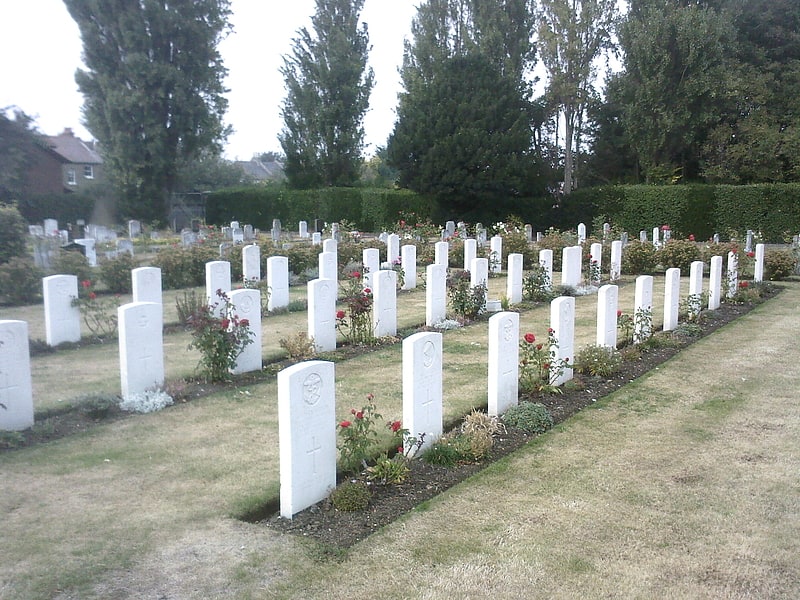
Burial ground. Hamilton Road Cemetery is a combined municipal and military burial ground situated in the coastal town of Deal, Kent, in South East England. Opened in May 1856, it was created to provide a new burial ground for Deal at a time when its general population was expanding and when previous, often ad hoc facilities for dealing with deaths in the area no longer sufficed.
The cemetery's civilian burials are managed by Dover Council, and its military burials by the Commonwealth War Graves Commission. It contains a Cross of Sacrifice of some significance and the burials of military service personnel from Great Britain, Belgium, Canada, and, very unusually, Nazi Germany, many of whom took part in some of the most famous incidents in World War I and World War II, including: the Gallipoli Campaign, the Battle of the Somme, the 1918 Zeebrugge Raid, the Battle of Dunkirk, the Battle of the Denmark Strait and sinking of HMS Hood, the Battle of Britain, and the more modern tragedy of the Deal barracks bombing in September 1989.
It also contains 66 local civilian war dead from World War II killed by German bombing and shelling between 1940 and 1945, 127 military burials from World War I (including three unidentified Naval ratings), and 54 from World War II.
There is a small mortuary chapel associated with the cemetery, but no dedicated church as such.[3]
Address: Hamilton Road, Deal
Deal Timeball
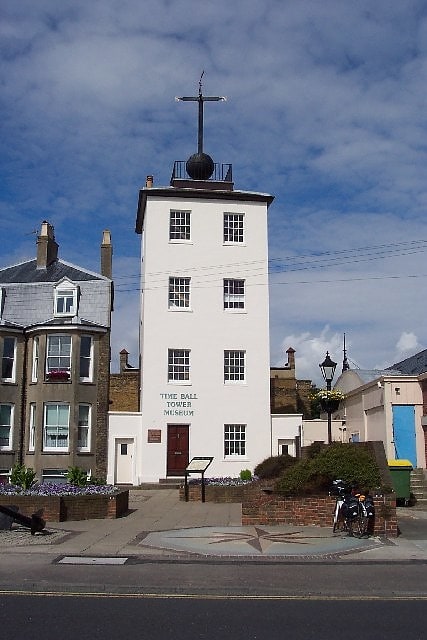
Museum in Deal, England. The Deal Timeball is a Victorian maritime Greenwich Mean Time signal located on the roof of a waterfront four-storey tower in the coastal town of Deal, in Kent, England. It was established in 1855 by the Astronomer Royal George Biddell Airy in collaboration with Charles V. Walker, superintendent of telegraphs for the South Eastern Railway Company. It was built by the Lambeth firm of engineers Maudslay and Field. The time ball, which, like the Greenwich time ball, fell at 1 pm precisely, and was triggered by an electric signal directly from the Royal Observatory.
Before it became a time ball tower, the tower was a semaphore tower used to signal to ships at anchor in the Downs or passing in the English Channel.
From 1821 to 1831, the Tower carried a semaphore mast, which was used by the Coast Blockade for the Suppression of Smuggling to pass information along the coast. The Blockade was under the auspices of the Navy, and was staffed by their personnel.
The Timeball Tower stands on the site of an earlier Shutter Telegraph. This was one of a chain of telegraph stations between the Admiralty in London and the Naval Yard at Deal. The telegraph line opened in 1796 and closed in 1814. Its purpose was to allow rapid communication between London and Deal, the latter being an important Naval anchorage during the Napoleonic Wars. In 1805 news of the naval victory at Trafalgar and the death of Nelson was brought to Deal by the schooner HMS Pickle (after calling at Falmouth), and transmitted by the telegraph to the Admiralty in London.
The Deal Timeball Tower Museum features exhibits about the history of the tower and its use for navigation aid, fight against smuggling, signaling, and the mechanics of the time ball.[4]
Address: Victoria Parade, CT14 7BP Deal
Deal Pier
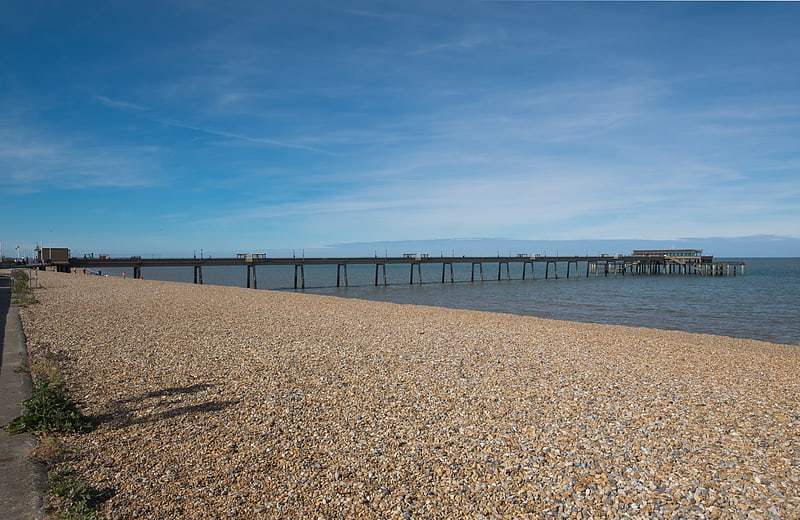
Tourist attraction in Deal, United Kingdom. Deal Pier is the last remaining fully intact leisure pier in Kent. It is the third pier to exist in Deal and was opened in November 1957 by the Duke of Edinburgh. Its structure was extensively refurbished and repaired in 1997, with work including the replacement of much of the concrete cladding on the pier's main piles. Work began in April 2008 to construct a new pier-head with a modern restaurant which opened the same year.[5]
Address: Beach St, C T14 Deal
Deal Town Hall
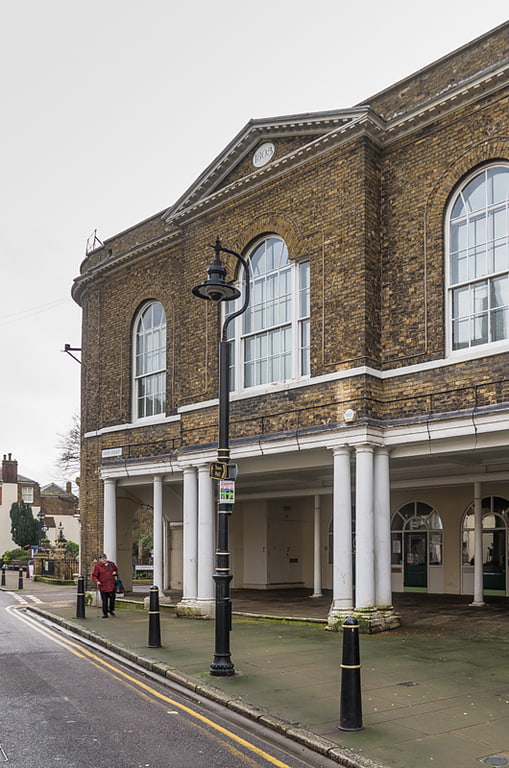
Deal Town Hall is a municipal building in the High Street in Deal, Kent, England. The town hall, which was the headquarters of Deal Borough Council, is a Grade II listed building.[6]
Old St Mary's
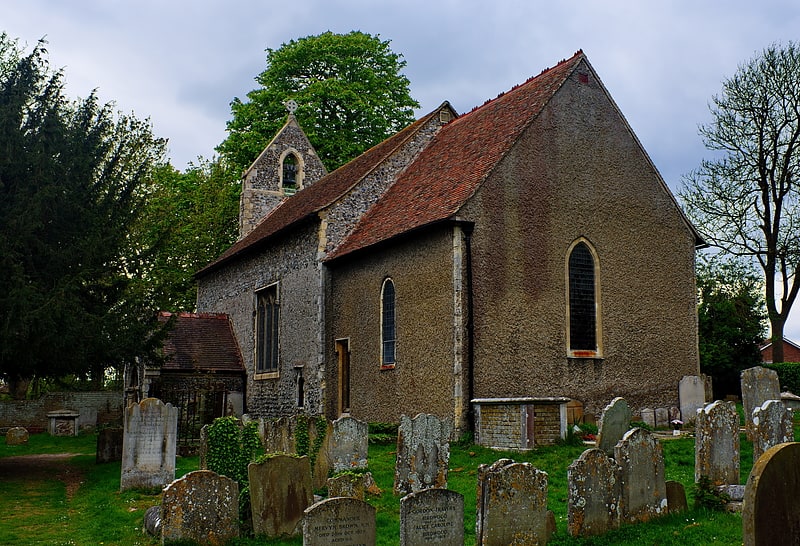
Old St Mary's Church, officially known as The Blessed Virgin Mary Church, is a grade II* listed Anglican church in Upper Walmer, Kent.[7]
St Mary's Church
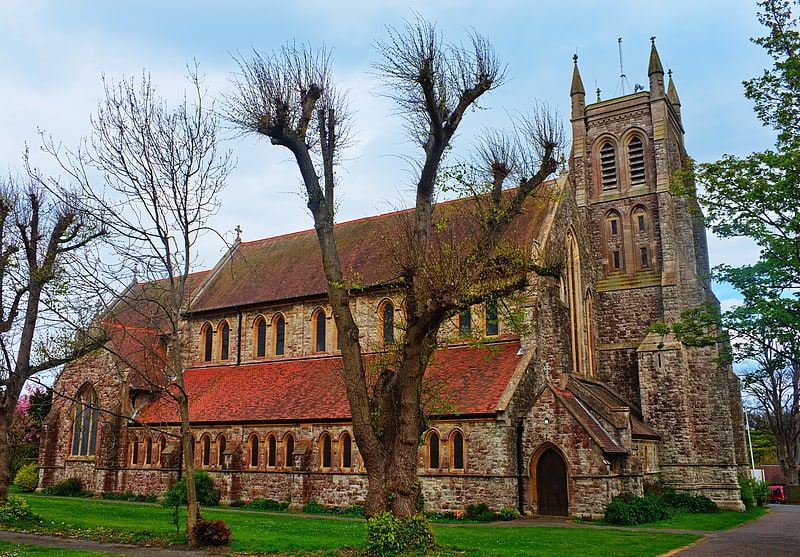
Church in Walmer, England. The Church of Saint Mary the Virgin, commonly shortened to St Mary's, is a church in the Church of England parish of Walmer, Kent, England.[8]
Address: 32 St Marys Rd, CT14 7QA Deal
St Saviour's
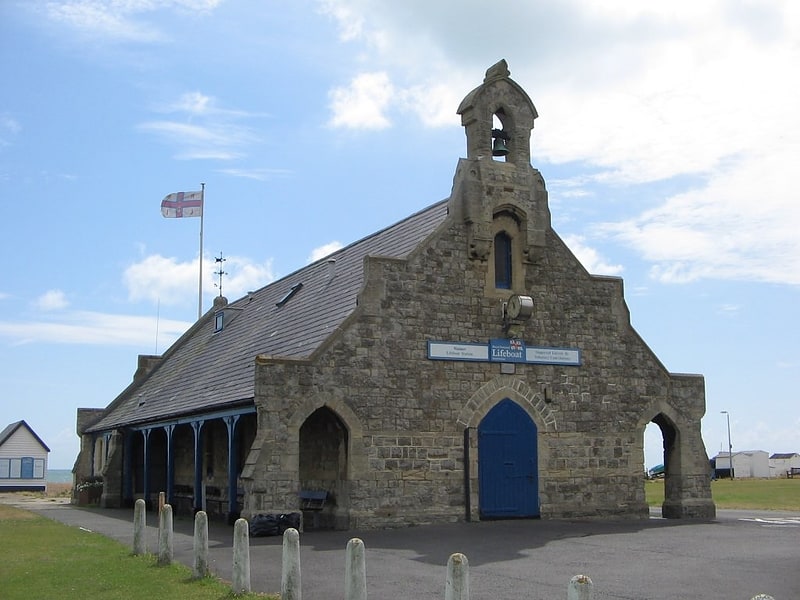
Church in Walmer, England. St Saviour's is a church on the seafront of Walmer, Kent, United Kingdom.[9]
Betteshanger Country Park
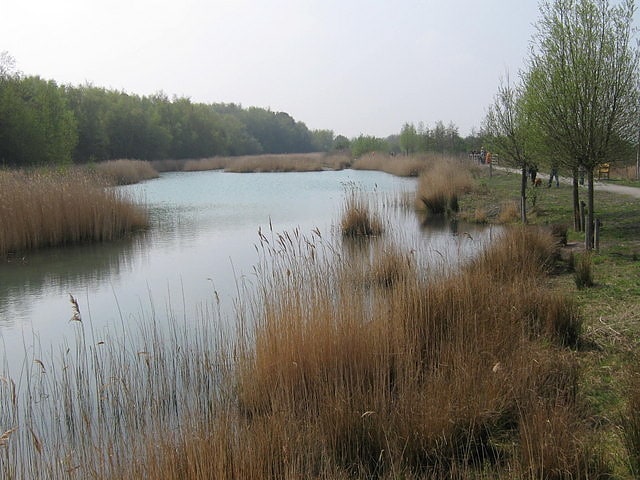
Park in England. Betteshanger Park is a park near Deal, in Kent, England. It covers the site of a former colliery spoil tip.[10]
St Andrew's Church
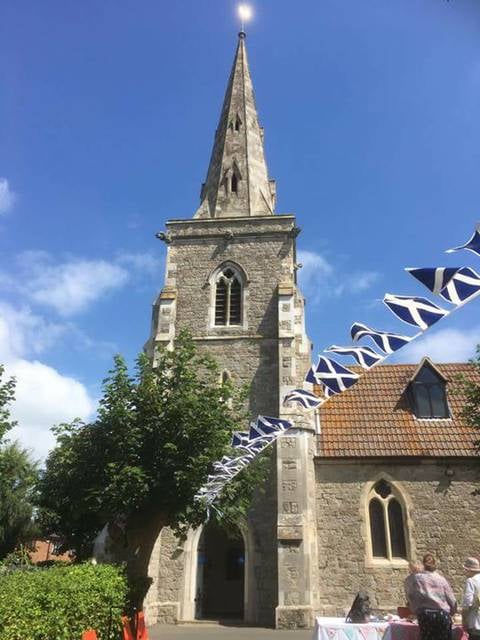
Church
Address: West St, CT14 6DY Deal